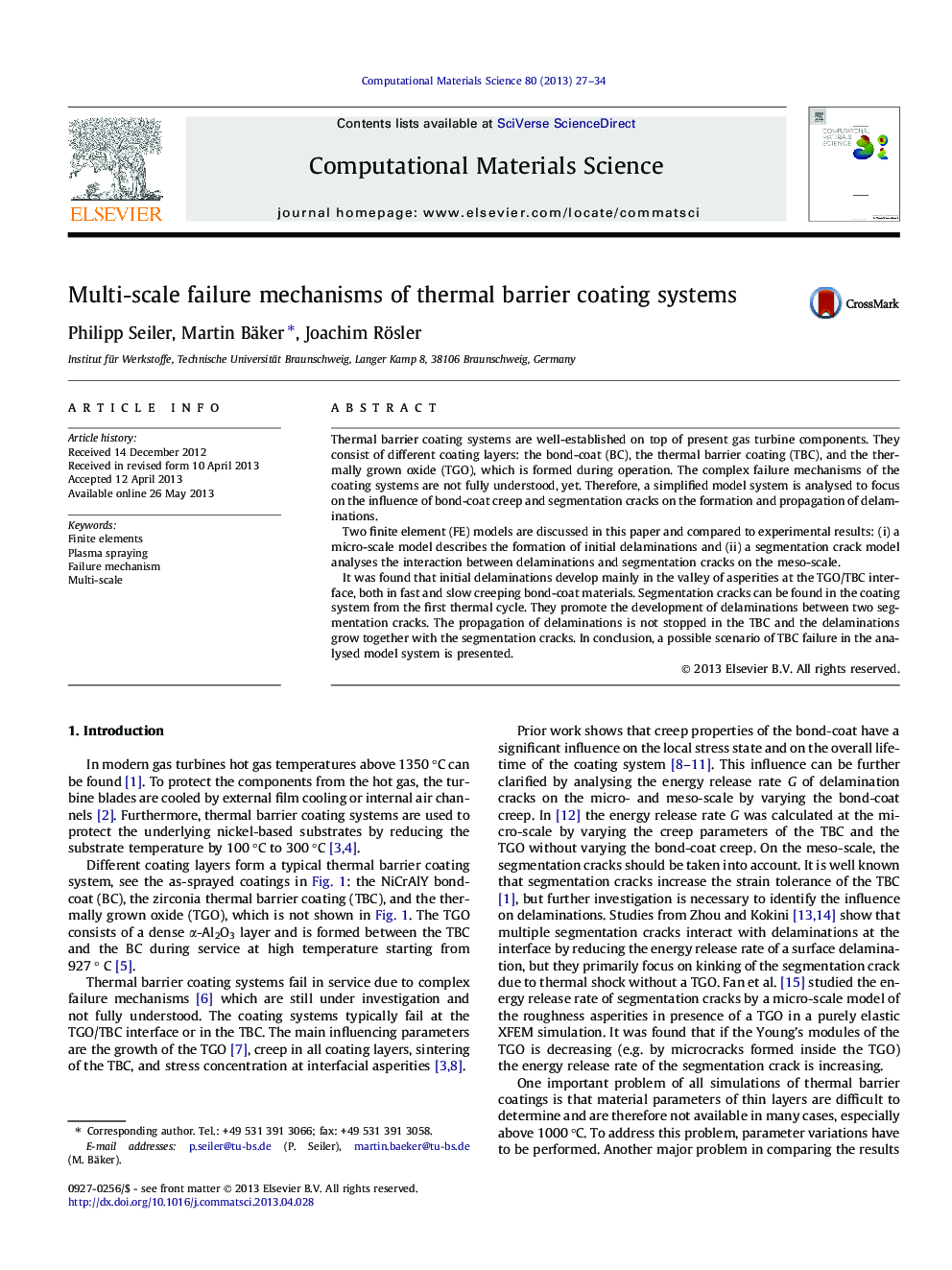| Article ID | Journal | Published Year | Pages | File Type |
|---|---|---|---|---|
| 1560918 | Computational Materials Science | 2013 | 8 Pages |
•Multi-scale modelling of coating failure in a model system.•Effect of microscale delaminations and mesoscale segmentation cracks is studied.•Delaminations likely to start between segmentation cracks.•Delaminations on meso-scale driven by buckling of the thermal barrier coating.
Thermal barrier coating systems are well-established on top of present gas turbine components. They consist of different coating layers: the bond-coat (BC), the thermal barrier coating (TBC), and the thermally grown oxide (TGO), which is formed during operation. The complex failure mechanisms of the coating systems are not fully understood, yet. Therefore, a simplified model system is analysed to focus on the influence of bond-coat creep and segmentation cracks on the formation and propagation of delaminations.Two finite element (FE) models are discussed in this paper and compared to experimental results: (i) a micro-scale model describes the formation of initial delaminations and (ii) a segmentation crack model analyses the interaction between delaminations and segmentation cracks on the meso-scale.It was found that initial delaminations develop mainly in the valley of asperities at the TGO/TBC interface, both in fast and slow creeping bond-coat materials. Segmentation cracks can be found in the coating system from the first thermal cycle. They promote the development of delaminations between two segmentation cracks. The propagation of delaminations is not stopped in the TBC and the delaminations grow together with the segmentation cracks. In conclusion, a possible scenario of TBC failure in the analysed model system is presented.
